You can put in all the effort, building an SEO strategy, creating quality content, and running audits, but that still doesn’t guarantee visibility in Google’s search results. In fact, around 90% of web pages get no traffic at all from Google.
So, if you’re not getting the traffic… who is? 🤔 The answer is simple: your competitors.
Think about it. In marketing, the real goal isn’t just to exist online; it’s to convince potential customers that your product or service is the best choice.
But here’s the catch: if your competitors are doing a better job at SEO, they’ll be the ones getting the clicks, leads, and sales instead of you.
That’s why SEO competitor analysis is so important. By studying what your competitors are doing right (and where they’re falling short), you can find opportunities to outsmart them and claim a bigger share of search traffic.
In this post, I’ll walk you through exactly how to perform a competitive SEO analysis step by step. Let’s dive in!
Table Of Contents
1 What is SEO Competitive Analysis?
SEO competitive analysis is the process of evaluating your competitors’ search engine optimization strategies to understand why they rank where they do in search results.
It involves looking at factors such as the keywords they target, the type of content they publish, the backlinks they’ve earned, and how their websites are structured.
The goal of SEO competitive analysis is to uncover both the strengths and weaknesses of your competitors so you can identify opportunities for your own website.
By knowing what’s working for them, you can refine your SEO strategy, fill in content gaps, and create a plan to outperform them in search rankings.
2 Why is an SEO Competitive Analysis Important?
When you run an SEO competitive analysis, you’re not just collecting data; you’re gaining insights that can transform your strategy. Here’s how it helps you:
- Spot market trends and new opportunities: You’ll see what’s working in your industry right now, so you can ride the wave instead of playing catch-up.
- Understand your audience better: By looking at what draws visitors to your competitors, you’ll learn what your audience really wants and how you can deliver it.
- Measure yourself against others: This is helpful to see where you stand compared to top players. This way, you know exactly what’s missing in your own approach.
- Uncover gaps in SEO strategies: You’ll identify weaknesses your competitors have overlooked, giving you the chance to fill those gaps and stand out.
- Stay ahead of the curve: By adapting quickly to algorithm updates and shifting user trends, you’ll always keep one step ahead of your competitors.
3 How to Perform SEO Competitive Analysis
Let us now discuss the ways to perform a competitive SEO analysis.
3.1 Identify Your Competitors
The first step in an SEO competitive analysis is figuring out who your real competitors are. If you don’t know who you’re up against, you can’t outsmart them.
Start by running simple searches on Google (or even Bing and Yahoo) using keywords related to your business. Look at the websites that consistently appear at the top of the results; these are the ones competing for your audience’s attention.
For example, let’s say you run a boutique that sells handmade jewelry. If you search for terms like handmade jewelry, artisan jewelry, or unique jewelry designs, you’ll notice the same brands and shops showing up on page one. Those are your SEO competitors.

Once you’ve done this manually, you can dig deeper with tools like Ubersuggest, Semrush, or Ahrefs. These tools do the heavy lifting by analyzing your site and showing you a list of domains that overlap with yours.
For instance, in Semrush, just enter your domain into the Organic Research tool, click Search.

Scroll down to see your top organic competitors. This way, you’ll know exactly which websites you need to analyze further.

3.2 Find Keyword Gaps
One of the smartest ways to gain an edge in SEO is by spotting keyword gaps, keywords your competitors rank for, but you don’t. These gaps are opportunities for you to expand your reach and capture more traffic.
Here’s how you can do it:
- Start with free tools like Google Keyword Planner. Enter your website URL, head to the Keyword Ideas section, and note down the suggested keywords.
- Next, compare these with the keywords your competitors rank for. If they’re getting traffic from keywords you don’t currently target, those are your gaps
For example, if you run an online pet store that sells dog supplies, you might search for terms like dog harness, puppy chew toys, or organic dog food.

Then, explore the Keyword ideas section to view a list of relevant keywords related to your website.
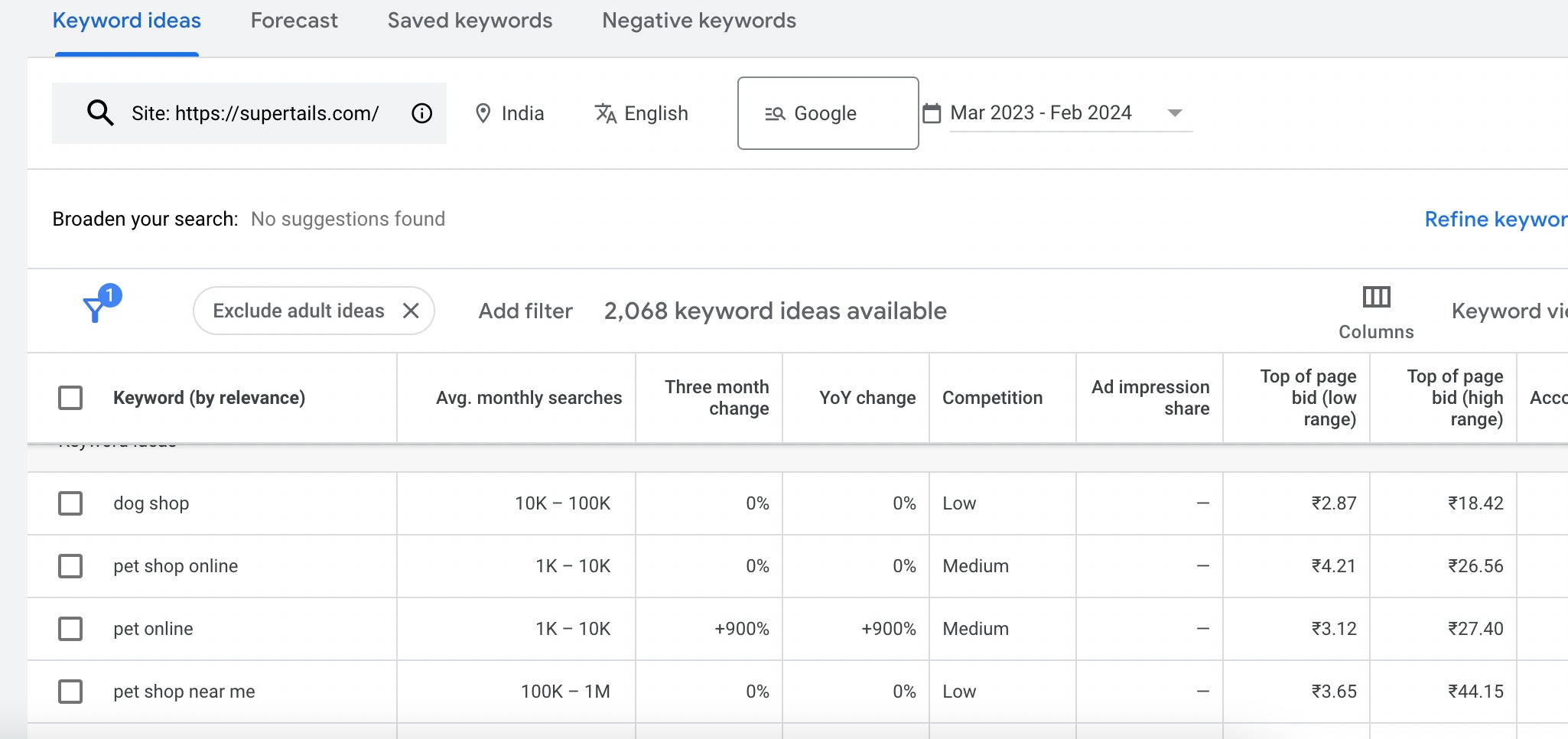
If you notice your competitor’s ranking for certain keywords and you’re not, that’s a keyword gap worth targeting.
You can take this further with advanced tools:
In Semrush’s Keyword Gap tool, just enter your domain and your competitor’s, hit Compare, and scroll down to see the missing keywords.

Tools like Ahrefs Competitive Analysis work in a similar way, giving you a direct list of opportunities you can use to build new content.
3.3 Perform Content Analysis
Now that you know which keywords you’re missing, you need to check whether your content is strong enough to compete. This means analyzing both your site and your competitors’ content.
Use tools like Google Analytics to assess the relevance of your content.
Navigate to the Engagement → Pages and screens section to view metrics such as page views and bounce rate. Analyze which pages have the highest engagement and whether the content aligns with your target audience’s interests.
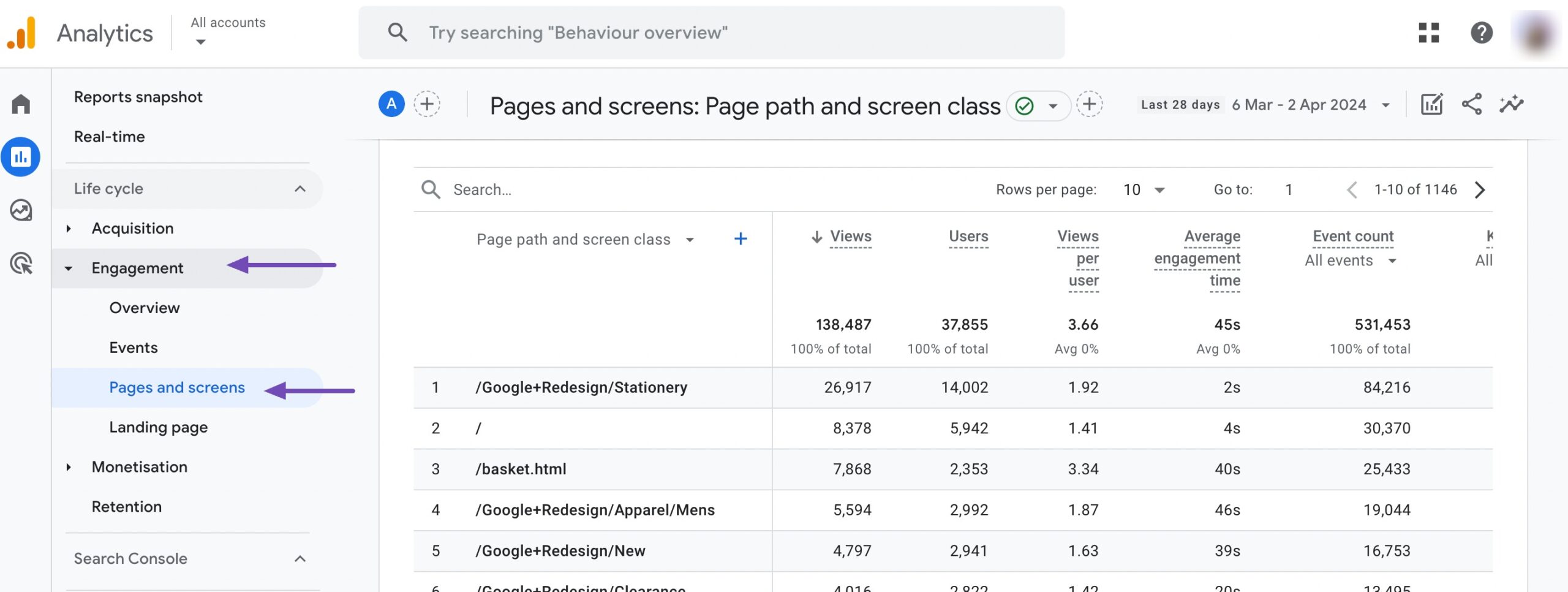
Tools like Semrush’s SEO Content Template (available in the free version) can help assess content depth. Enter your target keyword, and Semrush will provide recommendations for content length based on the top-ranking pages for that keyword.
Compare the length and depth of your content with top-ranking pages to identify areas for improvement.
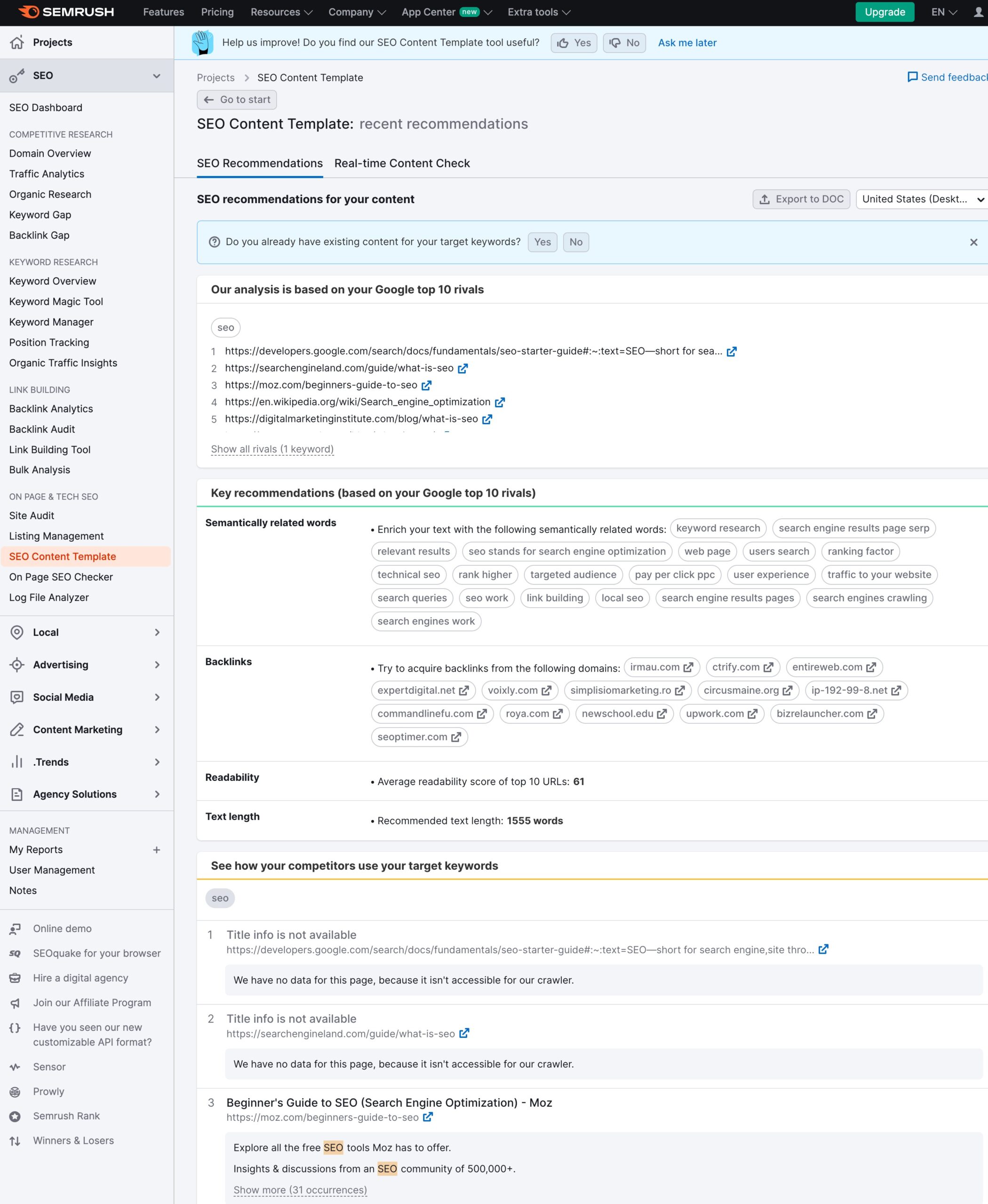
3.4 Perform On-Page SEO Analysis
Sometimes your competitors outrank you simply because their pages are better optimized. That’s why you need to analyze the pages that perform better than yours and figure out what they’re doing right. Once you know this, you can refine your own content and improve your rankings.
Here’s what to look at:
- Metadata: Check how they write their title tags and meta descriptions. Are they using keywords effectively? Do their titles make you want to click?
- Headlines: Look at how they structure headlines. Notice the length, placement of keywords, and whether they use title tags properly.
- Internal Linking: Pay attention to how they link to other pages within their site. Strong internal linking can boost SEO and keep visitors engaged longer.
The goal here isn’t just to copy them, it’s to learn from their strengths and then do even better by fixing their weaknesses.
To make this process easier, you can analyze your own site with Rank Math. It gives you detailed insights into headings, metadata, keyword usage, and more.

And with Rank Math’s Content AI, you can take it a step further, just click the Fix with AI button, and it will optimize your content for you. That way, you save time while making sure your pages are fully SEO-ready.
3.5 Analyze Competitor’s Backlink Profiles
Backlinks are one of the strongest ranking factors in SEO. If your competitors are outranking you, chances are they’ve built stronger link profiles. That’s why you need to see who’s linking to them, and how you can get those links too.
Keep track of websites linking to your competitors, as they may also be willing to link to your site. Consider reaching out to them with a new blog post or guide covering a relevant topic or offering valuable insights to encourage them to link back to your site.
Refer to our dedicated tutorial on finding your competitor’s backlinks.
3.6 Check Where Your Competitors’ Traffic is Coming From
If you want to beat your competitors, you need to know where their visitors are coming from. By analyzing their traffic sources, you can uncover opportunities to tap into the same channels and even do it better.
You can utilize the Ahrefs Website Traffic Checker tool to examine your competitor’s website traffic. This tool does not necessitate any sign-up or account creation.
Enter the URL to check the website traffic and click the Check traffic button, as shown below.

Now, look closely at what’s driving their visitors. Are they getting most of their traffic from Google search? From referral links on other blogs? Or maybe from social media partnerships?
Once you know this, you can take action, like targeting the same keywords they rank for, building partnerships with sites that link to them, or strengthening your presence on the platforms sending them traffic.
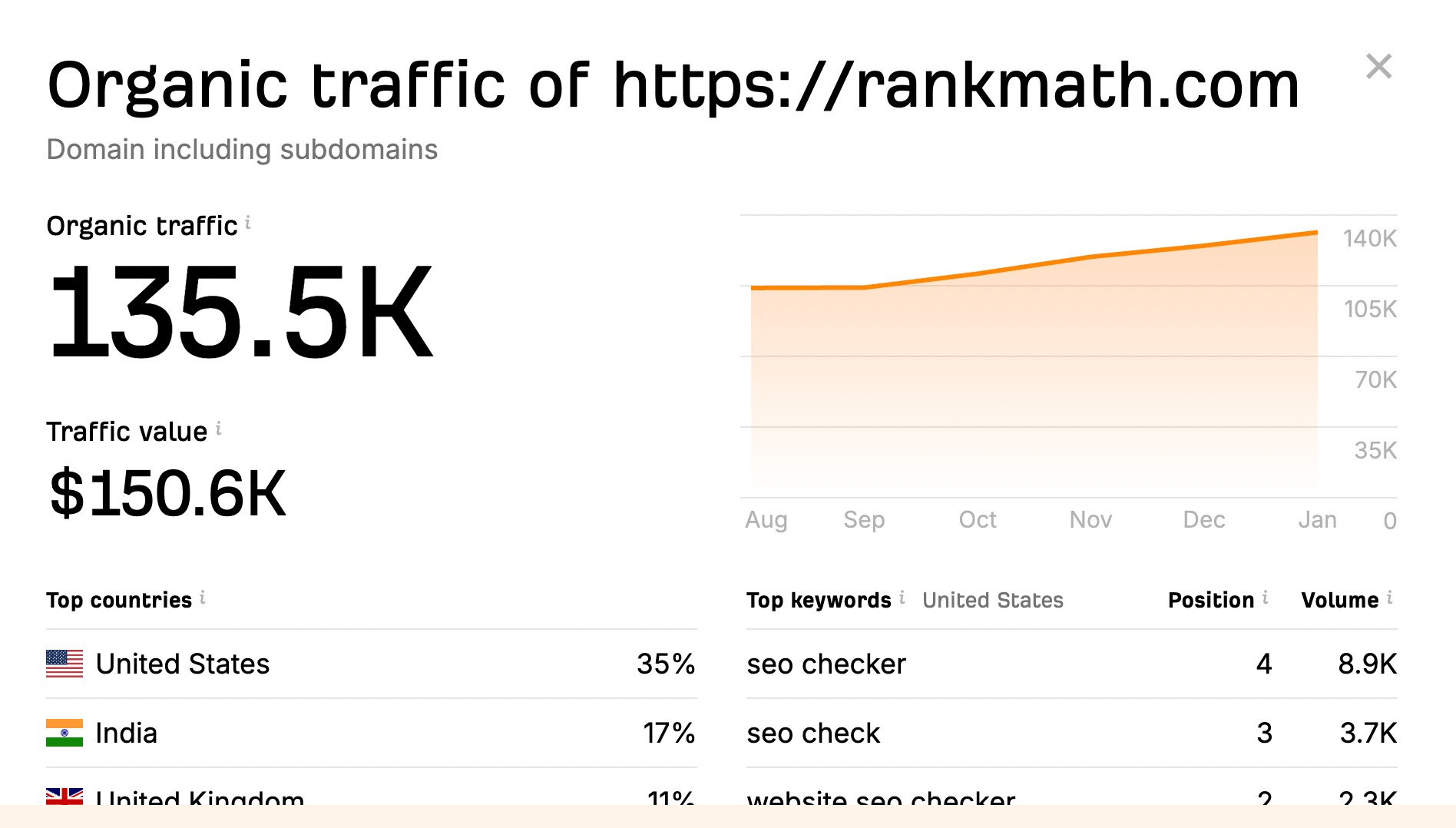
3.7 Capture Featured Snippets
The next big opportunity is featured snippets, those highlighted answers you often see at the very top of Google’s results. If your competitors are grabbing these spots, they’re stealing clicks that can be yours.
Use Google Search to identify featured snippets related to your target keywords or topics.
For instance, suppose you operate a gardening blog and want to capture featured snippets on how to grow tomatoes. Search for this query on Google and observe the types of featured snippets appearing in the search results. These snippets may include step-by-step instructions, lists, or tables on growing tomatoes.

You can then use a free keyword research tool like AnswerThePublic to analyze the questions and queries related to your target topic.
Enter how to grow tomatoes into AnswerThePublic and review the questions generated by the tool.
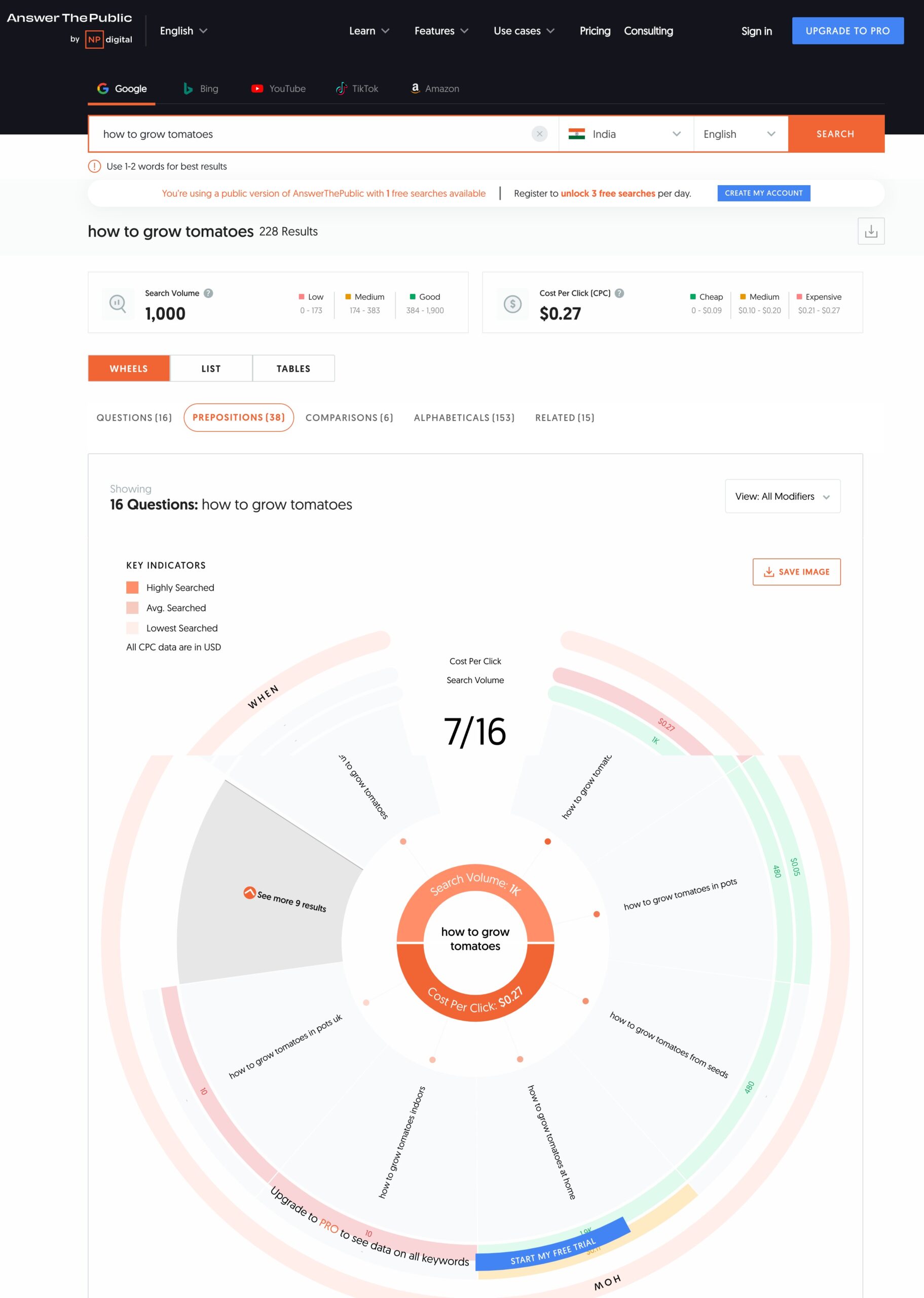
Next, check which competitors are winning those snippets. Study how their content is structured, whether it’s bullet points, tables, or concise definitions, and then create something even more useful and clear.
If you match the right format and directly answer user questions, you’ll give Google a strong reason to feature your content instead of your competitor’s.
4 Conclusion
When you run an SEO competitive analysis, you’re giving yourself the insights you need to strengthen your SEO strategy and outperform your competitors.
By studying what others are doing, spotting their strengths, exposing their weaknesses, and finding new opportunities, you can fine-tune your own approach for better results.
But remember, this isn’t something you do just once. SEO is always changing, and keeping an eye on your competitors helps you stay ahead of the game.
With consistency, the right tools, and a strategic mindset, you can secure higher rankings, attract more organic traffic, and position your website as a go-to resource in your niche. The more you apply what you’ve learned, the closer you’ll get to long-term SEO success.
If you like this post, let us know by tweeting @rankmathseo.
